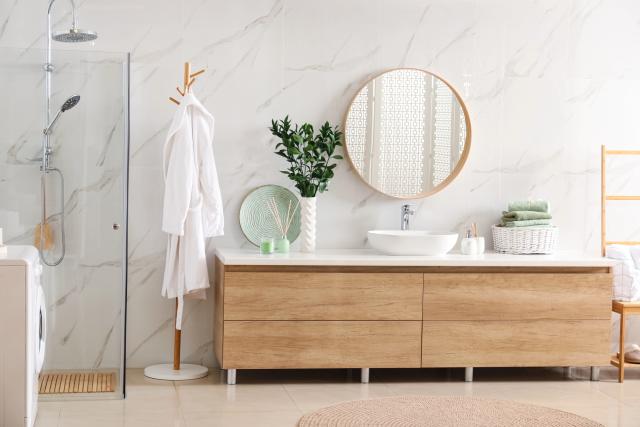
Typical Vanity Height Guide: What Experts Don't Tell You...
Your bathroom vanity height could be causing daily discomfort without you realizing it. The stand...
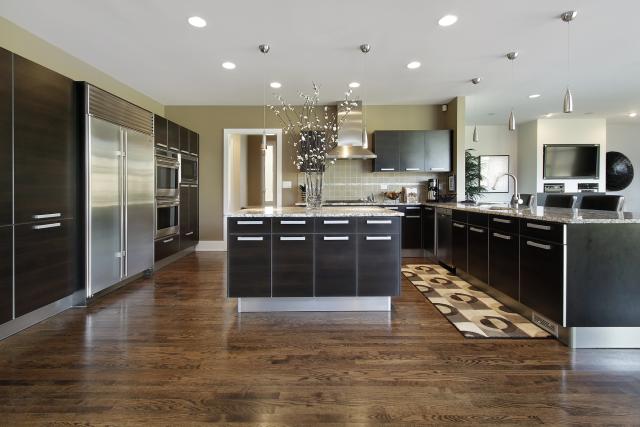
Kitchen floors endure constant foot traffic, dropped cookware, and daily spills, making material selection crucial for long-term satisfaction. Ceramic and porcelain tiles offer the longest lifespan, lasting 30 to 50 years or more with proper care. Vinyl flooring offers excellent value for families, combining durability with budget-friendly pricing that starts around $4 per square foot. The best kitchen flooring balances several key factors. Hardwood flooring can significantly increase your home's resale value, while luxury vinyl planks offer better moisture resistance than traditional vinyl sheets. Tile remains popular for good reason—it handles kitchen conditions while offering extensive design flexibility. Your flooring choice should align with how you actually use your kitchen. Consider these essential factors: daily wear resistance, water protection, comfort during long cooking sessions, and realistic maintenance requirements. The right material creates a kitchen that works beautifully for your household while protecting your investment.
Kitchen floors endure daily spills, heavy foot traffic, and temperature fluctuations that can damage various materials. Understanding your options helps you choose flooring that handles your kitchen's specific demands while fitting your budget and style preferences.
Ceramic and porcelain tiles deliver exceptional durability for busy kitchens, though these materials have important differences. Porcelain is made from finer clay, fired at temperatures between 2,200 and 2,500 degrees Fahrenheit, making it denser than ceramic tile, which is fired at 1,800 to 2,000 degrees.
The key difference lies in water absorption—porcelain absorbs less than 0.5% of water by weight, while ceramic typically absorbs 0.5% or more. This makes porcelain the better choice for areas prone to moisture.
|
Characteristic |
Ceramic Tile |
Porcelain Tile |
|---|---|---|
|
Water Resistance |
Good |
Excellent |
|
Durability |
Medium to High |
Very High |
|
Cost |
$3-$50 per sq ft |
$2-$45 per sq ft |
|
Best For |
Indoor walls, low-traffic areas |
High-traffic areas, outdoors |
|
Installation |
DIY-friendly |
Professional recommended |
|
Pros |
Cons |
|---|---|
|
Extremely durable |
Cold and hard underfoot |
|
Water and stain-resistant |
Professional installation recommended |
|
Wide design selection |
Grout requires maintenance |
Best for: High-traffic kitchens where durability and water resistance are top priorities
Luxury vinyl plank (LVP) and luxury vinyl tile (LVT) have gained popularity for their practicality and visual appeal. These products are 100% waterproof, making them ideal for use in kitchens where spills occur daily.
Luxury vinyl resists stains, scratches, mold, and mildew while convincingly mimicking hardwood and natural stone at costs typically ranging from $2.00 to $5.00 per square foot. Maintenance requires only regular sweeping and occasional damp mopping to keep floors looking pristine for years to come. The softer surface provides more comfort underfoot during long cooking sessions.
|
Pros |
Cons |
|---|---|
|
100% waterproof |
Can show scratches over time |
|
Easy maintenance |
Limited refinishing options |
|
Comfortable underfoot |
May not add home value like hardwood |
Best for: Families seeking low-maintenance, budget-friendly flooring that handles moisture well.
Traditional hardwood brings timeless beauty to kitchens but requires careful consideration of moisture exposure. Engineered hardwood offers enhanced stability as an alternative.
Solid hardwood consists of solid wood throughout, while engineered hardwood features a real hardwood wear layer over multiple cross-banded plywood layers. Engineered flooring's layered core provides better resistance to expansion and contraction from humidity changes, making it suitable for installations over concrete or in moisture-present areas like kitchens.
Solid hardwood can last 100 to several hundred years and allows approximately ten refinishings. Engineered hardwood typically permits four to six refinishings depending on wear layer thickness, offering a 60 to 120-year lifespan.
|
Pros |
Cons |
|---|---|
|
Increases home value |
Susceptible to water damage |
|
Can be refinished multiple times |
Requires prompt spill cleanup |
|
Timeless, classic appearance |
Higher maintenance than synthetic options |
Best for: Homeowners prioritizing resale value and classic aesthetics who can maintain the floor properly.
Natural stone flooring delivers unmatched elegance with exceptional durability—these materials are literally as hard as rock. Each piece offers unique patterns and colors that cannot be replicated. When properly sealed, stone floors require only simple sweeping and occasional mopping with pH-balanced cleaners.
Travertine is a limestone variant characterized by earthy tones and natural perforations that can be filled or left as is. It offers excellent scratch resistance for both indoor and outdoor applications.
Limestone contains calcium and features a pleasing pitted texture requiring sealing every few years. It naturally repels pathogens and comes in neutral colors that complement various design styles.
Marble forms from limestone under high heat and pressure, offering a luxurious appearance with distinctive veining and a wide range of colors. It requires regular sealing to prevent staining as it's relatively soft and porous.
|
Pros |
Cons |
|---|---|
|
Extremely durable and long-lasting |
Expensive initial cost |
|
Unique, luxurious appearance |
Requires regular sealing |
|
Easy maintenance when sealed |
Can stain if not properly maintained |
Best for: High-end kitchens where luxury appearance and long-term durability justify the investment.
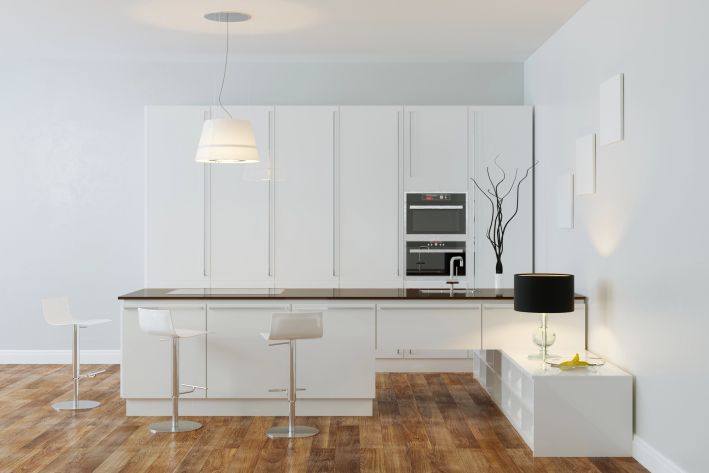
Cork costs between $3.00 and $9.00 per square foot, plus $1.50 to $3.00 per square foot for installation. With proper maintenance, including resealing every five to ten years, cork floors last 15 to 30 years.
Laminate flooring provides a synthetic alternative featuring a top layer designed to replicate the look of wood or stone. At $2.00 to $8.00 per square foot plus installation, it's typically more affordable than cork. Though less water-resistant than cork, laminate is highly durable, scratch-resistant, and requires minimal maintenance.
Both materials handle heavy traffic well, but cork tends to dent more easily than laminate. Cork's varied surface appearance helps hide minor scratches and small dents.
|
Pros |
Cons |
|---|---|
|
Budget-friendly options |
Cork can dent easily |
|
Cork provides natural antimicrobial properties |
Laminate shows water damage if seams fail |
|
Comfortable underfoot |
Limited lifespan compared to tile or stone |
Best for: Budget-conscious homeowners seeking eco-friendly options with moderate durability expectations
Understanding how different materials perform helps you choose the right option for your household. Each material excels in different areas, making some better suited for specific needs and usage patterns.
Kitchen floors face daily punishment from foot traffic, dropped utensils, and food spills. Porcelain tile leads in durability with a 9.5/10 rating, lasting 25-30 years in high-traffic kitchens. Natural stone follows at 9/10, with properly maintained floors potentially lasting centuries.
Vinyl flooring has improved significantly, earning a 9/10 durability rating with premium products lasting 15-20 years. Engineered hardwood receives a 7.5/10 rating, boasting a lifespan of 15-25 years with proper care.
|
Material |
Cleaning Requirements |
Periodic Maintenance |
|---|---|---|
|
Porcelain/Ceramic |
Simple sweeping/mopping |
Grout sealing every 1-2 years |
|
Luxury Vinyl |
Regular sweeping, occasional damp mop |
No special requirements |
|
Natural Stone |
pH-balanced cleaners |
Annual sealing recommended |
|
Hardwood |
Prompt spill cleanup |
Refinishing every 5-7 years |
|
Laminate |
Dust mopping, no wet mopping |
No refinishing possible |
Best for: Households with children or pets should prioritize low-maintenance options like vinyl.
Kitchens are often wet environments, making water resistance a crucial consideration. Water-resistant materials can handle some moisture but may warp with prolonged exposure, which differs from waterproof materials.
Porcelain tile offers superior water resistance due to its dense clay composition and high firing temperatures. Natural stone provides waterproof performance when properly sealed and installed. Luxury vinyl is 100% waterproof and handles both spills and appliance leaks.
Traditional hardwood can be damaged by exposure to moisture. Engineered wood provides better moisture resistance than solid hardwood, but it isn't waterproof. Cork is water-resistant but not waterproof, requiring similar caution as laminates.
Best for: Areas prone to spills require fully waterproof materials, such as porcelain tile or luxury vinyl.
Standing comfort matters during long cooking sessions. Cork flooring excels as a natural shock absorber for your joints. Vinyl offers an economical and gentle surface ideal for busy kitchens.
Wood flooring offers warmth and forgiveness that's more comfortable than stone or tile. Tile floors can feel cold and hard underfoot, especially in colder climates.
For safety, textured porcelain tiles offer better grip than smooth finishes. Cork flooring is naturally slip-resistant, thanks to its textured surface that prevents slipping when wet.
Best for: Families who spend hours cooking should consider comfort-focused materials like cork or vinyl.
Kitchen flooring costs vary significantly, affecting both initial investment and long-term value.
|
Material |
Cost Per Square Foot (Installed) |
|---|---|
|
$4 – $16 / ft² (materials + labor) |
|
|
$4 – $14 / ft² (materials + labor) |
|
|
$5 – $15 / ft² (complete installation) |
|
|
Engineered Hardwood |
$7 – $20 / ft² (installed) |
|
$11 – $25 / ft² (installed) |
|
|
$10 – $50 / ft² (installed) |
|
|
approximately $10 – $40 / ft² (e.g., marble) |
Quality flooring can last 20-30 years with proper care, compared to 5-10 years for budget alternatives. This makes premium materials, such as porcelain tile or natural stone, more economical in the long term, despite higher upfront costs.
Best for: Balance upfront cost and lifespan for the best value.
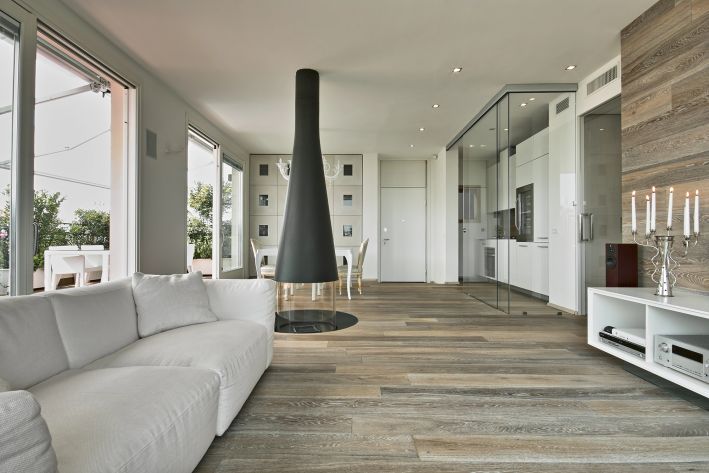
Oversized tiles create the seamless, uncluttered look that defines modern kitchen design. These large-scale options deliver practical advantages beyond their visual appeal:
The most versatile option is the "free length" format—tiles with consistent widths (typically 500mm or 600mm) and varied lengths up to 1000mm. This approach works well in kitchens of all sizes while showcasing each tile's unique character.
|
Format |
Size Range |
Best Application |
Visual Effect |
|---|---|---|---|
|
Free Length |
600×700-1000mm |
All kitchen sizes |
Natural stone aesthetic |
|
Super-Size |
1200×600mm |
Open floor plans |
Minimalist, contemporary |
|
Square Large |
1000×1000mm |
Small or open kitchens |
Expansive, seamless |
Best for: Homeowners seeking low-maintenance flooring with contemporary appeal
These tiles deliver the warmth and beauty of hardwood without the maintenance headaches or moisture concerns. Modern manufacturing techniques create convincing wood textures, colors, and natural variation.
The practical benefits make wood-effect porcelain particularly appealing:
Popular wood patterns include walnut, oak, wenge, and aged finishes. Neutral oak tones remain especially popular, particularly in kitchens with matching wood cabinetry or trim.
Best for: Families wanting wood's aesthetic appeal with tile's durability
Classic checkerboard patterns have evolved from retro throwbacks into sophisticated design statements. While traditional black and white combinations remain popular, fresh approaches use gray/white, blue/white, and warm brown/cream palettes.
Geometric patterns beyond the checkerboard offer additional design possibilities:
Large-format geometric tiles are particularly well-suited to current design preferences, combining bold patterns with fewer grout lines for easier maintenance. Hexagons, herringbone layouts, and modern tessellations add personality while maintaining design sophistication.
Oversized porcelain tiles in classic gray and white checkerboard provide an affordable way to achieve an elegant, stone-like appearance.
Best for: Design-conscious homeowners seeking a pattern without overwhelming the space
Proper installation determines whether your kitchen flooring will perform well for decades or fail prematurely. Regular maintenance protects your investment and keeps your floor looking fresh throughout its lifespan.
A level subfloor is essential before installing any kitchen flooring material. Uneven surfaces cause premature wear, cracking, and installation problems that cost thousands to repair later. For low spots in wood or concrete subfloors, use an underlayment, floor leveler, or floor patch product. Self-leveling underlayment works effectively on both wood and concrete subfloors—simply apply a primer, mix the underlayment according to the instructions, pour it into low areas, and spread it evenly with a trowel.
Floor Preparation Guide:
|
Subfloor Type |
Recommended Preparation |
Best For |
|---|---|---|
|
Wood |
Builder felt for minor issues |
Floating floors |
|
Concrete |
Self-leveling compound |
Tile installation |
|
Uneven |
Plywood layer (¼-inch+) |
Transitioning heights |
Pro Tip: After the floor leveler dries, sand high spots, then vacuum thoroughly before proceeding with installation.
Transition strips handle the practical and visual connection between different flooring materials. These strips protect floor edges from damage, create clean finished edges, and accommodate slight height differences between rooms. They also allow flooring materials to expand and contract naturally in response to seasonal temperature changes.
Daily maintenance determines how long your kitchen floor stays beautiful. Sweep or vacuum daily to remove grit and debris that scratches surfaces. Clean up spills immediately to prevent staining and water damage.
Pro Tip: Place mats in high-traffic areas and near the sink to reduce wear and catch spills before they reach your flooring.
The best kitchen flooring choice depends on how you actually use your space and what matters most to your household. Families with active lifestyles often find that luxury vinyl offers the best combination of durability and ease of maintenance. Homeowners focused on resale value typically prefer hardwood or high-end tile options.
Your daily routine should drive your decision. Households with children or pets benefit most from waterproof materials that handle spills and scratches without permanent damage. Those who cook frequently might prioritize comfort underfoot over maximum durability.
Proper installation is just as important as material selection. Even premium flooring can fail without proper preparation and professional installation. Regular maintenance—whether daily sweeping or annual sealing—keeps any floor looking great for years to come.
Current design trends favor large-format tiles and wood-look porcelain, but the most intelligent choice prioritizes long-term performance over short-term style. The right floor works well for your family today and continues to perform beautifully for years to come.
Consider your budget, lifestyle, and home goals when making this decision. A floor that matches your lifestyle creates the best value, regardless of the material type.
Smart kitchen flooring choices strike a balance between durability, water resistance, comfort, and budget to create lasting value for your home.
• Porcelain tile offers maximum durability, lasting 25-30 years with superior water resistance, making it ideal for high-traffic kitchens.
• Luxury vinyl provides the best value, combining 100% waterproof protection, easy maintenance, and comfort at $4-16 per square foot.
• Proper installation is crucial - level subfloors and use appropriate underlayment to ensure any flooring material performs optimally for decades.
• Consider your lifestyle first - families with children/pets benefit from waterproof options like vinyl, while those prioritizing home value should choose hardwood or stone.
• Large format tiles and wood-effect porcelain dominate 2025 trends, offering fewer grout lines, easier cleaning, and sophisticated aesthetics.
The most successful kitchen floors aren't just beautiful—they're chosen based on how your family actually uses the space, ensuring both functionality and long-term satisfaction.
GET THE ESSENCE OF RELEVANT HOME
IMPROVEMENT TOPICS IN LESS THAN 5 MINUTES

Typical Vanity Height Guide: What Experts Don't Tell You...
Your bathroom vanity height could be causing daily discomfort without you realizing it. The stand...
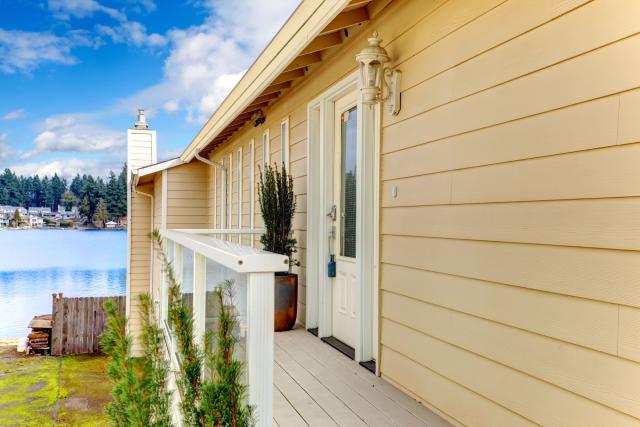
Choosing the right siding for your house means balancing upfront costs against long-term performa...

Thanks for joining our homeowners’ community.
Stay tuned!
Choose the category
Choose the category